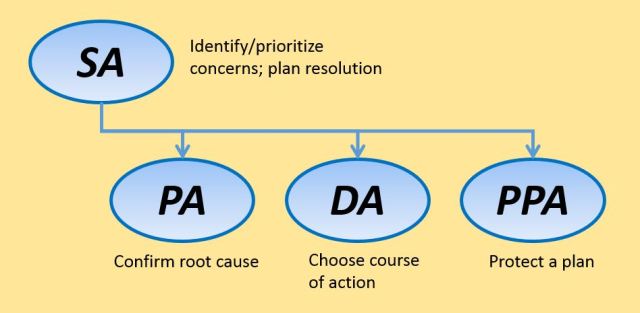How do you justify why a specific decision is worthy of an hour or two of analysis time and effort. This is typically delivered as a form of pushback, “I would never spend that much time making a decision – you’re making it too hard”. Let’s think together about how much time a decision is worth.
So what is the value of a decision? How much rides on it? What rule of thumb should I use when I determine how much time to invest in making a decision?
We use a “2 percent rule” or “50-to-1 rule”. This means, on average, that we don’t want to spend more than 2% of the value of the decision on the analysis effort required to make the decision. We would all think it foolish to spend $10,000 of our time to make a decision that has only $10,000 riding on it. We might as well flip a coin and go with trial and error in such cases. But spending $200 of our time on a decision that risks $10,000 seems a bit more reasonable, even prudent. What we really want is to spend the least amount of time we can, while still producing a superior (near ideal) outcome. We want lots of leverage from our analysis effort by thinking quickly, efficiently and creatively.
We calculate the value of the decision by comparing the “dollars at risk” between the best possible alternative that might be created or discovered and the outcome associated with picking an alternative that fails (and has to be replaced after it is implemented). In some cases, there are so many viable alternatives, few of which could fail, that I compare the best alternative with one of the OK, but mediocre ones.
When buying a used car, we might peg the dollars-at-risk at $5000 (the difference in purchase price, operating/maintenance/resell between the best car on the lot and a real lemon). The 2 percent rule hints that I would like to spend no more than $100 of my time on making this decision. If I make $50/hour at my job, I calculate the real value of my non-sleeping time at $25/hour. So 4 hours of research and analysis, test drives and debates would be time well spent.
Of course, most life decisions are driven less by money and more by values, love, or peace of mind. I might spend many extra hours looking for a car with my child just for the sake of our relationship or because I think car-shopping is fun or because their safety is vital to me.
Step back at a higher level. Most of us have more than 100 waking hours each week. If you could spend 2 hours each week on decisions that would make the remaining 98 hours significantly more productive or joyful, why wouldn’t you?

